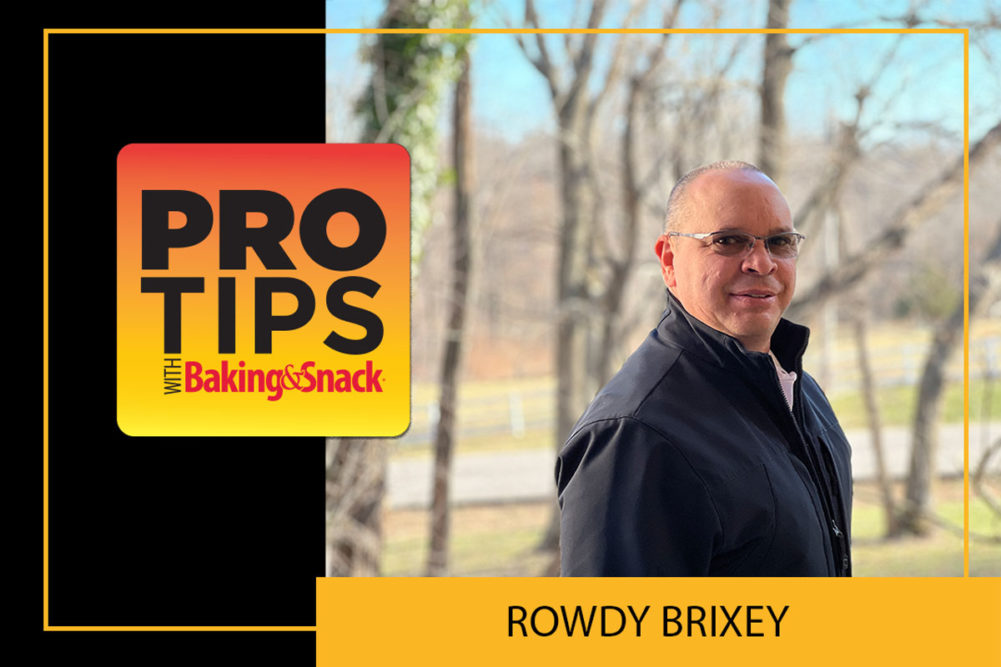Pro Tip: Here are some helpful hints and a detailed checklist for selecting the right material handling equipment (MHE) before moving forward with post-packaging automation.
As a follow-up to my thoughts coming out of the recent Baking & Snack webinar on Automating Out of the Baking Industry Labor Challenge, I thought I’d offer some tips as they relate to selecting product handling material for the future.
Automating the packaging area is a costly endeavor and will only bear a return if you can drive change that impacts safety, improves labor efficiency and reduces overall shipping costs. In this project, the smallest detail matters: will all customers accept full container count versus piece count or if using recyclable containers, will you be required to wash on every cycle?
These are just the tip of the iceberg.
Go behind any major grocery store or big box store, and you’ll see racks, baskets, trays, pallets, master cases, cardboard boxes and crates. Some of these items get picked up by the bakery and others by a third party for return to the bakery. Many cardboard boxes are recycled, and in a few instances, picked up by a secondary partner (one that uses your material handing container locally as their primary container, thus reducing cost for both).
(Bonus Pro Tip: Go to a variety of stores where you sell your product. Buzz the doorbell at the back dock, and ask the person who opens the door what works best for them? Is it a basket, rack/tray, box, pallet/master case, etc. If you freeze/thaw, include a trip to a couple of large third-party frozen storage locations.)
Keep in mind that most of the empty material handling containers you see at the back of the store will be exposed to the environment and this includes bird and rodent droppings. If you intend to recycle these containers, you’ll need to invest in trash dumpers and washers. These devices have a high cost of ownership as it relates to maintenance, sanitation, required water and fuel. In many cases, your sewer discharge permit or surcharges will be impacted as well.
For those willing to take the time to explore all the options and invest in thorough discovery, I’d recommend enlisting the help of a university, interns or co-ops. For those in a hurry, consider hiring material handling experts. There are many options but do your homework and get independent opinions.
Things to consider for your checklist:
- Build a SKU-level Excel model to highlight density and pack count for route truck, box truck and over-the-road (OTR) vehicle.
- Do you cross dock with other suppliers? If so, what MHE do they use and why?
- Are you doing one-way shipping or returning?
- If shipping one-way, then how will you or your customer handle the empties?
- If returning the MHE to the bakery, how often will you need to pick it up?
- Can the empty MHE be nested to allow for high-volume, dense loading to reduce OTR cost per mile?
- How will trash or rodent droppings on returning MHE be handled?
- Will all bakeries have room for the washing/drying equipment, or will you need to route MHE through select sites?
- Identify and validate pack-out/cube-out optimization opportunities.
- If you plan to run the “new” MHE through existing post-packaging equipment, then what clearance or tolerance is required?
- Will your existing sensors detect the selected MHE, and can your stops/clamps accept it?
- Are there any specific conveyor or guide rail adjustments within the system that would currently present an issue with the new MHE?
- Are the lift points strong enough to handle stacking?
- If the automated system goes down, how easy can you handle the “new” MHE, and what is the impact on headcount?
- Will the MHE of choice be transported using hand trucks, dollies, racks or pallets?
- What are the most common injuries related to your current MHE, and will the “new” MHE reduce or increase the likelihood of injury?
- Can you get samples and test prototypes?
- Do you require visibility of the product when in the shipping container?
Remember that if you choose a MHE that uses plastic, you’ll need to understand the cost and effect of an all-virgin material versus recycled materials, impact on durability and your ability to re-grind damaged MHE. Your final selection will have a profound impact on your sustainability expectations.
Once you have narrowed your choices for MHE, you can begin to calculate the investment cost, labor impact and ultimately the ROI.
If your final choice doesn’t take trucks off the road and reduce transportation labor costs, then you probably won’t find the ultimate cost savings you’re looking for.
As you can see, there is a lot to consider before you select the best route for you, the bakery, the company and the customer.
Rowdy Brixey is founder and president of Brixey Engineering Inc.
You can connect with him on LinkedIn.






